Review for Hellsing - The Complete Original Series Collection
Introduction
I learned this year that I had fallen out of love with Hellsing Ultimate. It was great fun the first time I encountered it, exciting, thrilling, balls-to-the-wall action, and ridiculously over the top performances. This year saw its Blu-ray debut in the UK, and we began with the new episodes 5-8, Hellsing Ultimate that I hadn’t seen before. Sure enough, my response to it was just as it was when I watched the first four episodes initially. But when it came to watching episodes 1-4 on Blu-ray, I learned that for me Hellsing Ultimate was like a rollercoaster ride. Great fun the first time, but increasingly tedious, and slightly nauseating the more you ride it. Hellsing Ultimate takes all the dials and punches them to eleven, and leaves them there. The thing is that you can’t appreciate loud, unless you have some quiet to provide a frame of reference.
I’m probably a minority opinion, but fortunately I may just have been catered for. Ultimate wasn’t the first attempt at animating the Hellsing story. Back in 2001, Studio Gonzo had a crack at it, with their short lived Hellsing series, but the downside it faced was one that many anime shows face. It reached the end of the manga canon, and had to come up with its own, unique ending. The slow pace of the manga publication is the reason why it took ten years for the story to be completely animated in Hellsing Ultimate. But with a thirteen episode run to cover the early part of the Hellsing manga, I hope there’s enough time and space to put in the silence that makes the loudness stand out, that it develops the characters, explores the story and the universe in a way that Ultimate just doesn’t have the time for.
This isn’t the first time that Hellsing has come to the UK. Originally released by Pioneer a.k.a. Geneon in the US, it was licensed and released here by ADV UK and quickly became one of their biggest sellers. For this release, Manga Entertainment haven’t acquired those ADV masters however, they’ve instead got the Madman PAL masters from Australia, so while the content may be the same, the packaging will be decidedly different from the original UK release, different menus, different trailers, maybe even a little different in the way of extra features.
Vampires exist, as do the legions of the undead, and the Hellsing organisation has been tasked with guarding the British Empire from their onslaught. The current head of the organisation is Sir Integra Hellsing, and the ace card she holds is Alucard, a renegade vampire who fights for humanity against his own kind. If only vampires were the only problem they had. Britain is a Protestant nation, and Hellsing works for the Church of England, something that rubs the Vatican the wrong way, who have their own Iscariot organisation to battle the undead. The ideological differences between the two groups have them locking horns on more than one occasion, and while they are distracted, the vampires can feed. But while political infighting has been keeping the two rival groups distracted, a sinister power from the past has been reborn, and now the master race is calling the shots. Meanwhile, Alucard gets bored and whimsical, and turns a policewoman named Seras Victoria into a vampire, another undying recruit for Hellsing.
Thirteen episodes are presented across 4 discs from Manga Entertainment.
Disc 1: Impure Souls
1. The Undead
2. Club M
3. Sword Dancer
Disc 2: Blood Brothers
4. Innocent as a Human
5. Brotherhood
6. Dead Zone
Disc 3: Search and Destroy
7. Duel
8. Kill House
9. Red Rose Vertigo
Disc 4:
10. Master of Monster
11. Transcend Force
12. Total Destruction
13. Hellfire
Picture
Hellsing gets a 4:3 regular transfer across 4 single layer discs. The transfer is over 10 years old now, let alone the series and it looks decidedly creaky at this point. It’s an NTSC-PAL conversion, with a soft, lower resolution image, the expected ghosting and blended frames, while pans and scrolls are a little uneven. Also the colours are somewhat muted, which is a surprise given that this is an early digipaint show, accomplished on computer instead of the traditional cel and paint.
That said, it stands out among similar shows of the era in that the computer origins don’t show. The characters and backgrounds look hand drawn, there’s none of the jagged edges or obvious pixellation, or indeed the excessive static nature of the majority of early computer animated anime. It’s just the consistency of the colouring, and the lack of print damage or flicker that indicates that it doesn’t have a film origin.
The first instinct is to compare it to Hellsing Ultimate, which would be a mistake. There’s a five year gap, and a wodge load of budget difference between the two. The original Hellsing series is also a made for TV broadcast, so it’s less extreme in the material that it can show. The animation is a fair bit more limited in this version, and it plays heavily on atmosphere, on shadow and light and on moodiness to sell its spooky vibe. The characters too are different in appearance, stockier and less well defined, as you would expect in a lower budget production. It does more than enough to tell its story though.
Sound
You have the choice between DD 2.0 English and Japanese, with an optional translated English subtitle track. I went with the Japanese audio track and was reasonably happy, although the first incarnation of Alexander Anderson is not a patch on the Hellsing Ultimate version. However, the peerless Norio Wakamoto did have a role in the original as Integra’s duplicitous uncle. Once again, the English audio track is an acquired taste, English accents for US audiences, which in the UK play a little too Daphne Moon. There’s an odd decision in the Japanese audio track to keep languages as authentic as possible, so while Brits speak in Japanese, Hong Kong residents speak in Cantonese, and Americans speak in English? Weird! There are the occasional typos in the subtitles, especially for names. Integral Hellsing pops up on more than one occasion, while in this version, it seems Iscariot’s bulldog is Alexander Andersong. Also an issue is dialogue levels across the discs. Often the dialogue is low enough to be subdued by action and music, while on disc 3, the reverse happens, with dialogue too loud to the point of distortion at higher levels.
Where Hellsing’s original version really shines is in the music. This is one of the coolest shows around, with composer Yasushi Ishii’s themes really unique and stylish. There’s a funky attitude to the music here that transcends both the story and the production values of the show, and help make each episode even more compelling. That coupled with memorable theme songs, including a power ballad from US band Mr Big as the ending, all help make Hellsing stand out.
Extras
As mentioned, these are the Australian Madman discs, not the ADV discs, and as such come with slightly animated menus and jacket pictures when the discs are at rest in compatible players.
Disc 1 offers the textless closing, a four minute music video trailer, with images from the show set to techno music, and a concept gallery with 50 colour and line-art images.
Disc 2 has the first textless ending, and another concept galley with 50 images. Most prominent on this disc is the 17-minute Staff Interview, a promo piece for the anime, which catches the Gonzo creators at various points as they sell the anime to the Japanese public, and also answer questions about the adaptation. There’s also a brief, disembodied interjection from creator Kouta Hirano, giving his blessing to the project.
Disc 3 offers 16 pieces of Japanese Cover Art, version 2 of the textless ending, and another Concept Gallery with 50 images.
Disc 4 also delivers a Concept Gallery with 50 images. You’ll find 7 images of Magazine Art, 5 images of the Weapons of Hellsing, and version 3 of the Creditless Ending.
Madman Propaganda translates as trailers, and across all four discs you’ll find trailers, most likely for shows that you just can’t buy anymore, including Vampire Hunter D, Armitage Dual Matrix, Berserk, Excel Saga, End of Evangelion, Ah My Goddess: The Movie, Burn Up Excess, GTO, Vampire Princess Miyu, Real Bout High School, Noir, Boogiepop Phantom, Trigun, Cowboy Bebop, Blood: The Last Vampire, FLCL, Spirited Away, and Niea_7.
Conclusion
I like Hellsing a lot, and indeed I even like it more than Hellsing Ultimate. I suspect that were I to be asked after viewing it three more times, I doubt my opinion would change quite as drastically as it did for Ultimate. The original Hellsing does indeed have time to develop an appealing narrative, it does have the time to explore its characters, and just as I hoped, it has those moments of silence to provide contrast to the explosions of loud. It’s an altogether more satisfying series. The only drawback would be the lack of Nazis, other than a brief appearance of the Major in silhouette.
The first six or seven episodes adapt the manga storyline, although you’ll see certain differences in location and character, as well as order of events as Hellsing’s story unfolds. It pretty much remains faithful to the manga up to the point of the Valentine brothers’ attack on the mansion, but thereafter it goes its own way, taking the chipped vampires plot thread and developing something different from it. It also introduces a new vampire villain for Hellsing to deal with, in the form of Incognito, a vampire that resembles a cross between Nosferatu and Davros.
If you’ve seen Hellsing Ultimate, then you’ll have to make allowances for the lower production values of Hellsing, the character designs are different, the animation is more limited, and the material has to conform to the late night broadcast standards of Japanese television, not the comparative freedom of the OVA format. The animation is less explicit, and accomplishes more through atmosphere and implication. What I like most about the original series is its character focus. It really does tell Seras’ tale, innocent police woman suddenly thrust into a twilight world when Alucard makes her into a vampire. There is a lot more attention given to her trying to come to terms with her new existence, her fear of losing her humanity conflicting with her revelling in her new powers. The show also gives more background to its other characters, explores Integra, the Valentine brothers, adds meat to the bones of the story, gives more substance to go with the style.
If it does stumble a bit, it’s with the anime original material, just as you might expect. With the arrival of Incognito and the new threat against Hellsing, the battleground ventures into the mind, and like so many sixties action adventure series, characters perceptions are warped, and they find themselves doing battle on the mental plane. It becomes something of a recurring theme in the last six episodes, messing with the characters’ minds, and Hellsing loses some of the bite and pace of the manga adapted material. It still manages to hold the attention and entertain though.
One final thing that I do appreciate though is Hellsing’s take on the United Kingdom. I’ve seen several versions of the UK through Japanese eyes in anime form, there will be another one soon in the K-On! movie, but Hellsing has a singular style and attention to detail that goes beyond other such explorations. There is still a distinctive Japanese filter on things, but this is probably the closest they’ve come to getting it ‘right’, for want of a better word. The production values aren’t a patch on Ultimate, and there’s no way that it could ever match the OVA series’ absolute scenery-destroying nuttiness, but in every other way, I find the original Hellsing to be far superior. For one thing, it doesn’t put me to sleep, and for another thing, the music absolutely rocks.


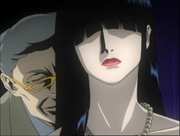
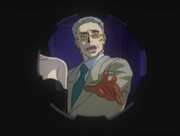
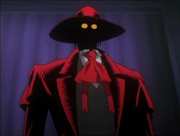

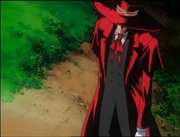
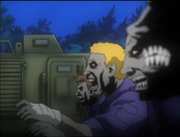
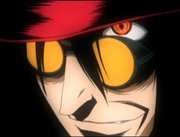
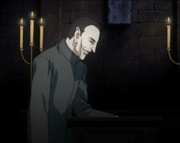
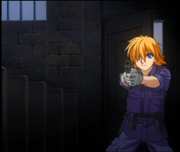
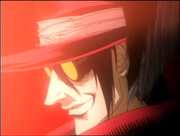
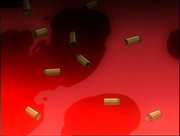
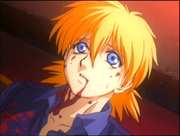
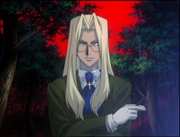
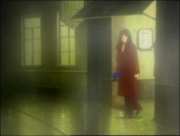
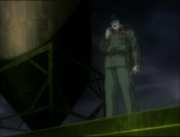
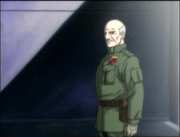
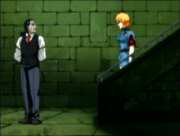
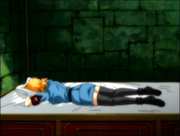
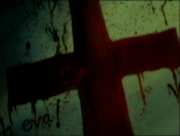
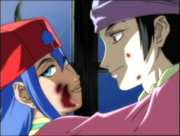
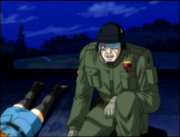
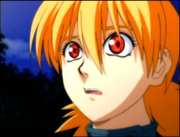
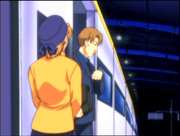

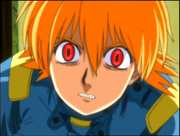
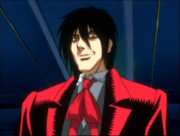
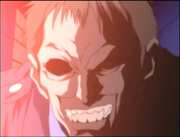
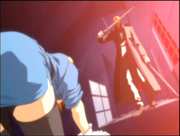
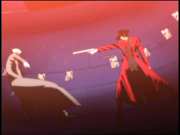















































Your Opinions and Comments
Be the first to post a comment!